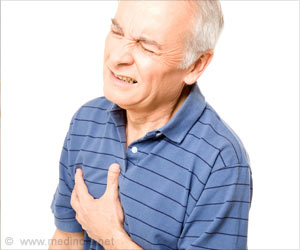Participants played an average of 3.6 days of exercise or sport per week, with an average of 2.6 hours of moderate activity per week and 2.4 hours of extreme activity.
Prof. Geoffrey Tofler, senior author of the paper and a fellow of the Royal Australasian College of Physicians (RACP), and of University of Sydney and Royal North Shore Hospital, says, “Although regular exercise improves health, strenuous exercise causes a transient increase in cardiac risk. Being able to recognise the warning signs of an impending cardiac event is critical to mitigating those risks during exercise.”
“The risks are elevated when accounting for participants with pre-existing risk factors like hypercholesterolaemia, hypertension, smoker status, weight issues, and family history of heart disease.“
Despite the popularity of Masters football, the prevalence of cardiovascular risk factors and possible cardiac symptoms for heart attacks in players have not been adequately studied.
“In total, one in five study participants had one or more possible cardiac symptom during a game in the prior year, but only a quarter of them sought medical attention,” he said.
“In a hypothetic scenario of participants having chest pain while playing, around half of them said they would keep playing for five to ten minutes waiting for the symptoms to pass.“
“Almost half of the participants were unsure whether they would recognise symptoms they might experience during games, such as chest pain, as an indicator of potentially serious cardiac risk.”
They also said that the statistics were worrying, especially due to the fact that the risk increases with age. This risk of an heart attack was even greater in those who exercise rarely or not at all.
The need for better cardiovascular education and knowledge has been emphasized as an important solution to prevent or reduce cardiac events. Most of those surveyed agreed that external defibrillators and CPR training were important and should be a staple on football fields during all sports.
“Performing CPR and using a defibrillator could be the line between life and death for someone experiencing sudden cardiac arrest, as the survival rate decreases by seven to ten per cent for every minute without the use of either method.” says Prof. Tofler.
“Education strategies should focus on giving players clear instructions to assist rapid symptom recognition and management of cardiac events.“
“These instructions should be made available to players electronically and onsite through posters for easy access. This will be vital to taking prompt action and increasing the rate of survival.“
The authors also said that while it was important to note that the benefits of exercise still far outweigh cardiac risk overall, these measures might further increase the benefit to risk of heart attacks after 35 years of age.
Key Findings
Out of the 153 participants of ages 35 or more, the following observations about heart attacks have been performed:
- 49.6% are not confident in their ability to recognize the symptoms of a heart attack (32.7%) express confidence in recognizing one in the others
- One out of five participants reported experiencing one or more possible cardiac symptoms during physical activity in the previous 12 months
- Only one quarter (24.4%) of those experiencing one or more symptoms sought medical help
- In an imaginary situation where a participant experiences chest pain while playing
- 46.6% said they would leave the field immediately, although 49% would continue playing for 5 to 10 minutes to see if the pain subsided, and most of them would continue playing further
- One-third thought that they had a heart attack but the hospital declined their thoughts
- 45.1% said they thought that they had a heart attach, they would rather make someone drive to the hospital than have an ambulance
- Only 39.9% were aware that warning signs may be present a few days before a heart attack
- 67.3% knew how to provide CPR
Source: Medindia



